We’ve all had the experience, whether we are a photographer or not. Someone shows us a picture. We hold it in our hands and wonder. We wonder not only about the content of the image, something mesmerizing or fantastic or disturbing or beautiful or ugly or anger-making or thrilling. We also wonder how that image came to be.
“Beyond the Light: The Stories Behind the Photographs” by Layne Kennedy
Self-published, 2023
review by W. Scott Olsen
I don’t mean the technical aspects, although photographers will sometimes go there. I don’t mean shutter speed and aperture. Instead, we wonder how the photographer wound up in this remarkable situation and had the presence of mind to capture an image. We wonder what’s going on in the frame beyond the optical evidence.
In other words, we see an image, and if the image is good, we ask for the story.
Sometimes, the story is necessary to explain what’s going on. Sometimes, the story reveals an aesthetic vision, a bit of dedication, or dumb luck. But, as with almost everything, a behind-the-scenes look is illuminating and serves to deepen our appreciation of what we see.
Oddly, though, there are a few photo books that take the back story as one of their primary focuses. Yes, there are explanations published here and there. But, as a central thesis, the story of a photograph written by the artist is rare. Happily, I have on my desk today a new book by Layne Kennedy called Beyond the Light: The Stories Behind the Photographs. Every page is a compelling story doubled. There is the narrative within the frame, the composition of the image, and then there is the text which speaks to the image. Every page of this book is a visual joy and a bit of aesthetic celebration.
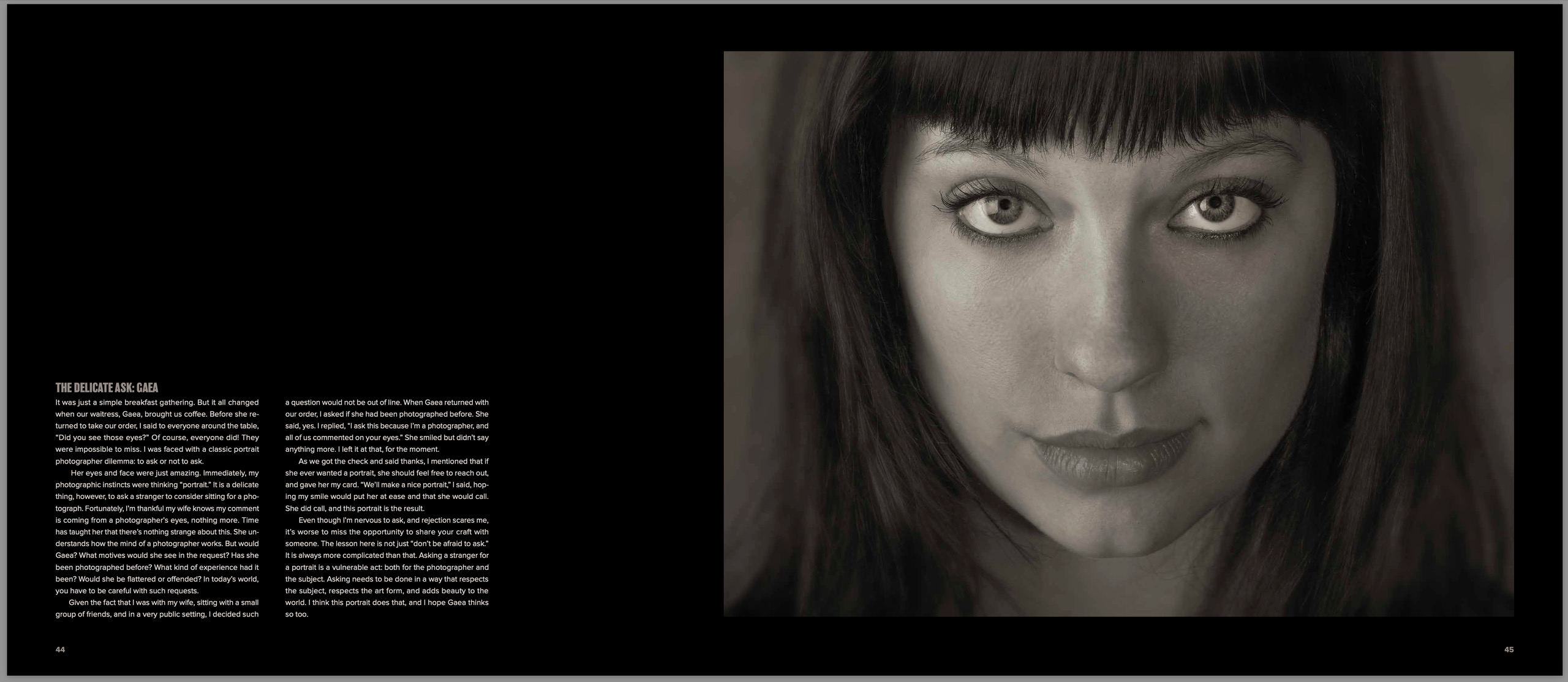
Layne Kennedy, as many people will know, is a remarkable and important photographer. His work has been published in Smithsonian, LIFE, Audubon, Islands, Sports Illustrated, Nature Conservancy, Newsweek, National Geographic Traveler, National Geographic Adventure, Outside, The New York Times, The Washington Post, and many other places.
He is one of the photographers whose talent has brought him the good luck to travel the world, from the Great Plains to Iceland, Greenland, the Amazon, the Caribbean, Ireland, Costa Rica, Portugal, Finland, and beyond.
Beyond the Light is a retrospective, although it’s certainly not a eulogy. It is not meant to be an over-arching summation of a career. It is, however, a rumination, a study of some of his favorite photographs, the why and how they came to be.
Beyond the Light begins with a short chapter called “The Heart of the Story: My Life through the Lens.” It’s an origin story of how he got into photography, beginning with his first taste at the California State Fair.
At the fair, I spotted a vendor selling tiny cameras with 20 rolls of film for $5. That was all the allowance money I had saved in the whole world. Dad pulled me aside and said, “I’d think twice about this. There’s a good chance the camera won’t work. $5 is a lot of money. It’s all you have.” I didn’t listen.
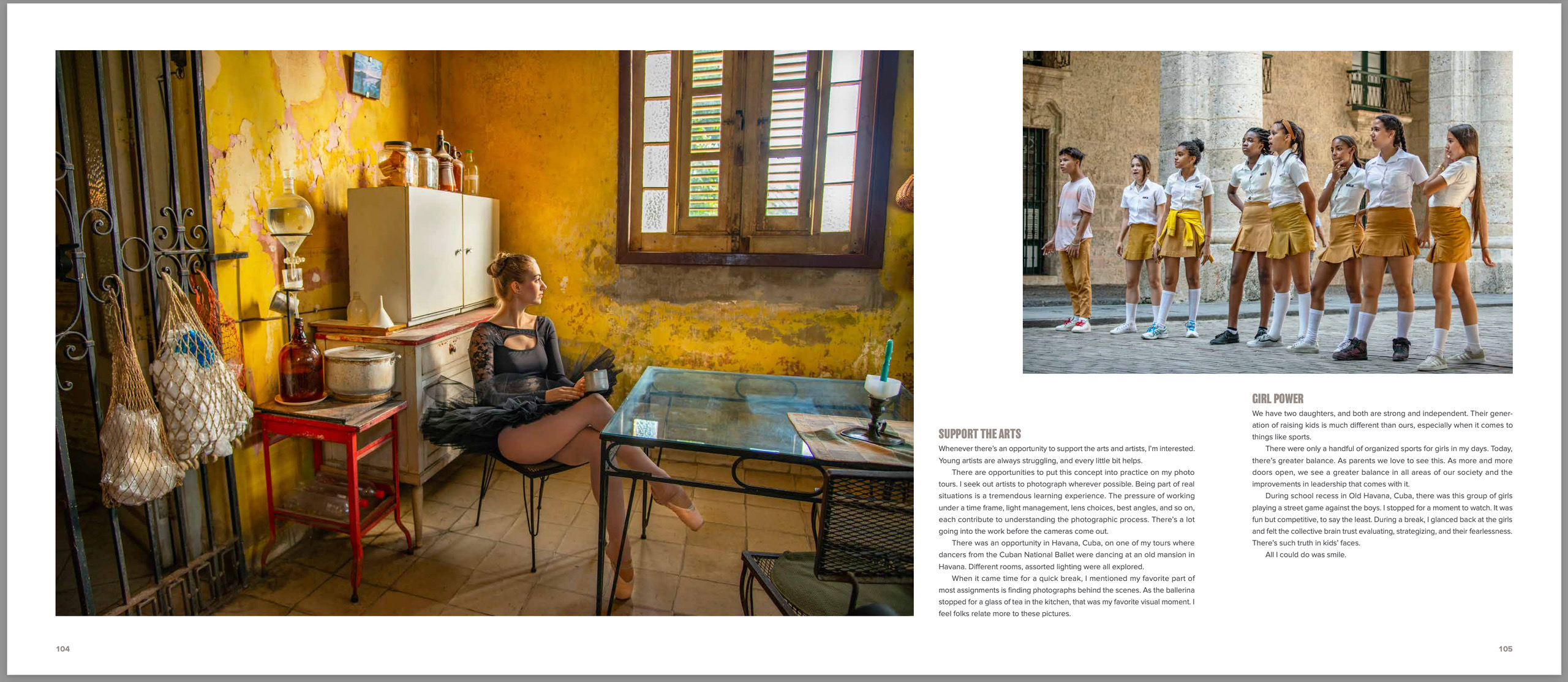
Of course, the camera did not work. But that didn’t really matter. The chapter takes us through his education and early career advice, the meandering way he became a success. He concludes the chapter by saying,
The collection of images chosen for this book represents a lifetime of work, of looking at, learning about, and seeing the world. My lifetime. They are what I saw and, as such, form the heart of my story as a photographer. I hope that in viewing them, you can put yourself next to me in those moments.

After the introduction, the book is a wide-ranging and often breathtaking collection of images. And with all of them, there is what might be described as an extended caption. But to say so does the text a great disservice. With each of the images, there is a story. For example, the book begins with an image of storm clouds in the Black Hills, roiling cumulous over a hillside populated with leaf-bare trees. The story that goes with it is a narrative about the weather that summer, where they were staying, the search for appropriate framing and composition, and the moment of the image capture. The result is that I’m captivated by an image and then involved with a story. In other words, I’m hooked.
From then on, the book presents images and stories from around the world. Some of the stories are situational. Some are more philosophic. Sometimes, although thankfully not very often, the story does not exceed the role of a caption. When he describes, for example, a picture of a Cuban butcher as “A street vendor prepares for the weekend market,” I’m left wanting more. Not because of the image, though. The black-and-white image of a bare-chested butcher, a pig’s head, and meat hanging from various hooks or out on a table is impressive. But I would love to know more about where it came from. That is the promise of this book. Stories that are only captions are rare, however, which in this collection is a merit.

One of my favorite stories involves a breakfast outing when the server, a woman named Gaea, appeared with coffee, and everybody noticed her remarkable eyes. But how do you ask a complete stranger if you can take their portrait without sounding dangerous or creepy? It’s a common discomfort for photographers. The story of “The Delicate Ask” is as wonderful as the image.
Beyond the Light is a photo book you read. The text is equally as important as the images. While it’s possible to open this book to any page and sample, there is a particular merit to starting at the beginning and turning the pages in order. There is a rewarding narrative arc to this book, a kind of travelers’ narrative that grows as you get farther in. You get involved in the aggregate and Kennedy’s voice becomes as close as a narrator’s.

One of my favorite images/stories is called “A Story of One” – the story of melting snow/ice taken on a honeymoon road trip in Alaska. Too long to quote here, it ends: “It was perfect. I knew it. Like a road trip with my bride, I knew everything was perfect—the moment and the exposure. I felt it. Sometimes, one is all you need.”
Another one of my favorites is an image of a Cuban ballerina, in costume, having a cup of tea in a paint-chipped kitchen. The full text of the accompanying story reads:
Support the Arts
Whenever there’s an opportunity to support the arts and artists, I’m interested. Young artists are always struggling, and every little bit helps. There are opportunities to put this concept into practice on my photo tours. I seek out artists to photograph wherever possible. Being part of real situations is a tremendous learning experience. The pressure of working under a time frame, light management, lens choices, best angles, and so on, each contribute to understanding the photographic process. There’s a lot going into the work before the cameras come out.
There was an opportunity in Havana, Cuba, on one of my tours where dancers from the Cuban National Ballet were dancing in an old mansion in Havana. Different rooms, assorted lighting were all explored.
When it came time for a quick break. I mentioned my favorite part of most assignments is finding photographs behind the scenes. As the ballerina stopped for a glass of tea in the kitchen, that was my favorite visual moment. I feel folks relate more to these pictures.
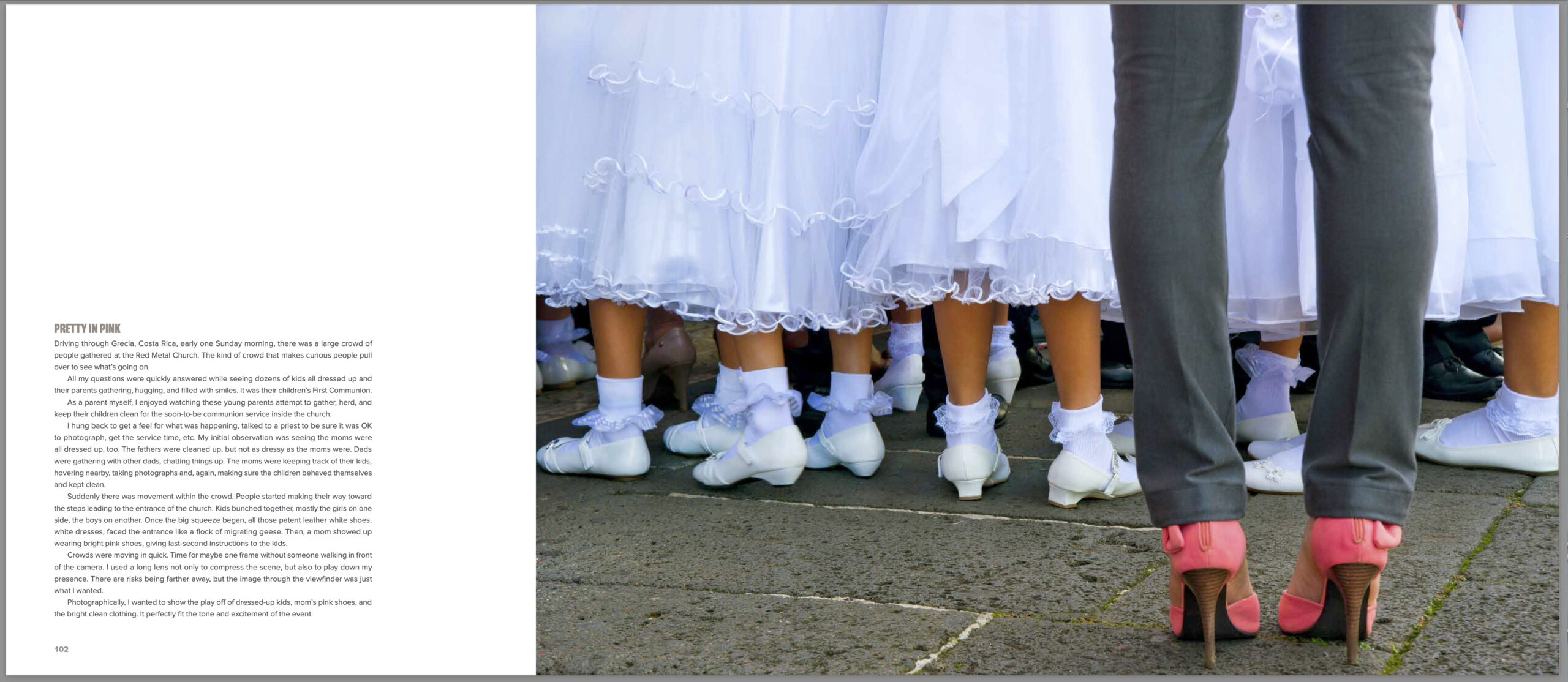
The book contains black and white and color. The book contains landscape and portrait, outdoors and indoors. The book contains home-ground and the far-flung. Kennedy’s work is insistently vibrant and energetic. He has a keen eye for the still image that tells a story, so it’s perhaps not surprising that his storytelling about the storytelling is equally compelling.
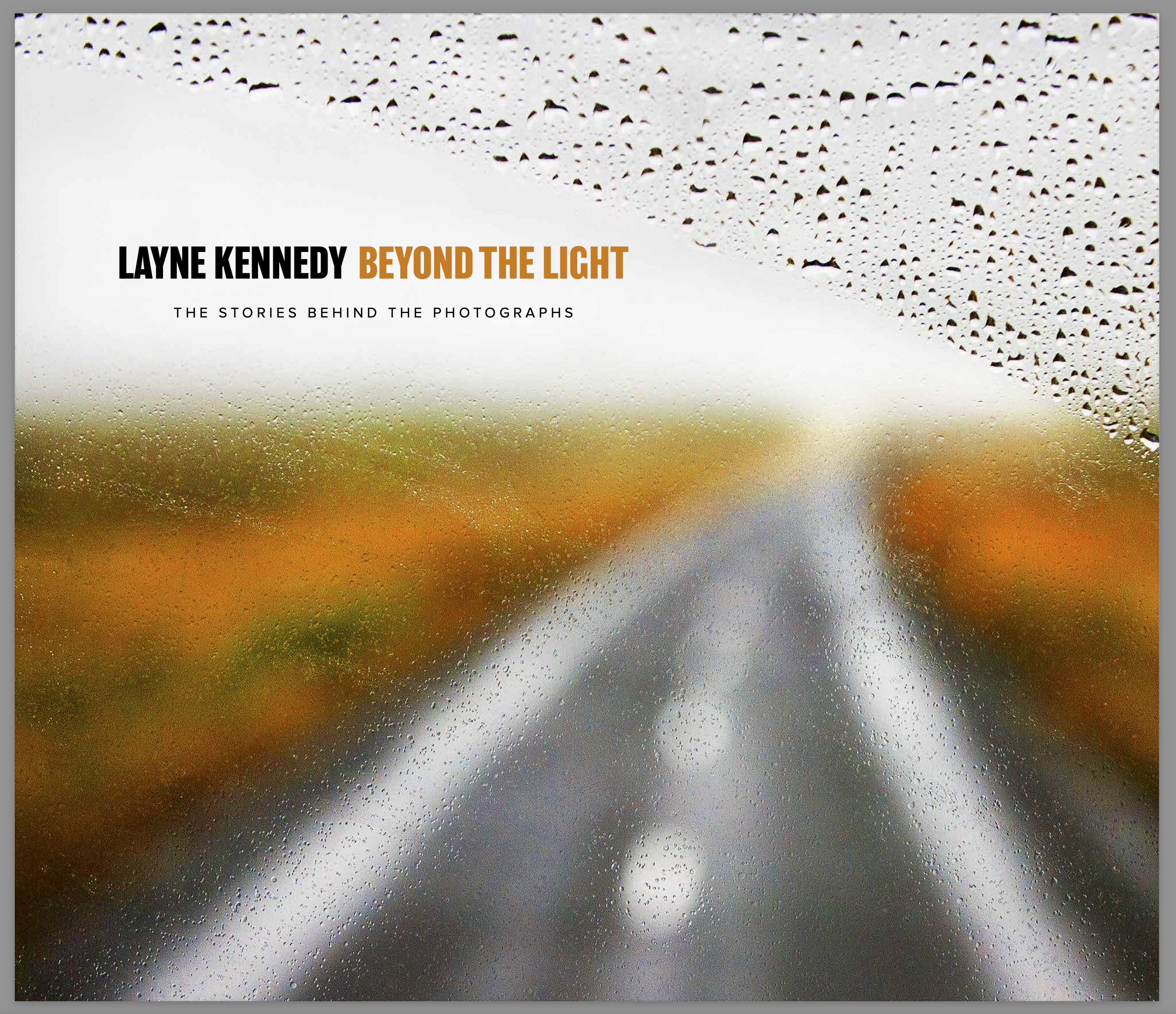
A note from FRAMES: Please let us know if you have a forthcoming or recently published photography book.




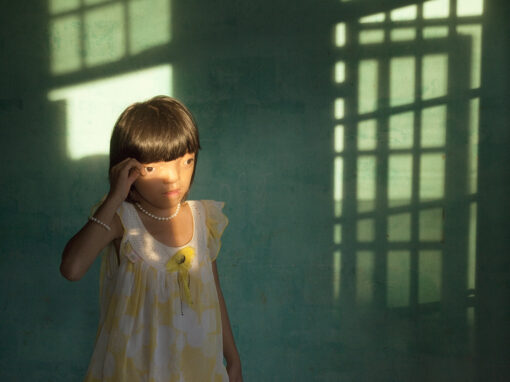
Trish Oliveira
January 14, 2024 at 21:36
A beautiful, designed book!